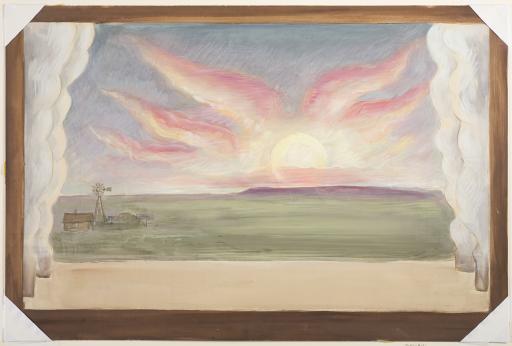Design for Stage Set, John Steuart Curry
Artwork Overview
John Steuart Curry, artist
1897–1946
Design for Stage Set,
1941–1942
Where object was made: United States
Material/technique: gouache
Dimensions:
Image Dimensions Height/Width (Height x Width): 508 x 761 mm
Image Dimensions Height/Width (Height x Width): 20 x 29 15/16 in
Mat Dimensions (Height x Width): 24 x 32 in
Image Dimensions Height/Width (Height x Width): 508 x 761 mm
Image Dimensions Height/Width (Height x Width): 20 x 29 15/16 in
Mat Dimensions (Height x Width): 24 x 32 in
Credit line: Gift of Daniel Bradley Schuster in memory of Ellen Curry Schuster
Accession number: 1992.0168
Not on display
If you wish to reproduce this image, please submit an image request



